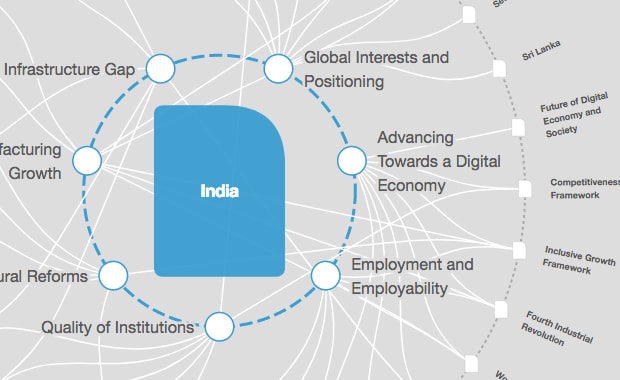Which country has the largest diaspora?

Image: A porter sits in a wheelbarrow on a busy road divider outside a wholesale fruit and vegetable market in Bengaluru, India. REUTERS/Abhishek N. Chinnappa

Get involved with our crowdsourced digital platform to deliver impact at scale
Stay up to date:
India
India now has the world’s largest diaspora.
Over 15.5 million Indians live outside the country, a number greater than the combined populations of Zimbabwe and Kuwait. Since 2005, when Indians formed the world’s third largest diaspora at 9.5 million, their numbers have risen by staggering 60%, a new study on international migration by the United Nations has reported.
The report said that the total number of international migrants—people living in a country other than the one of their birth—grew by over 41% since 2000 to 244 million, or about 3.3% of the world population.
“The rise in the number of international migrants reflects the increasing importance of international migration, which has become an integral part of our economies and societies,” Wu Hongbo, the UN under-secretary-general for economic and social affairs, said on Jan. 12.“Well-managed migration brings important benefits to countries of origin and destination, as well as to migrants and their families.”

Over two thirds of the immigrant population was hosted in just about 20 countries.
The US remained home to the largest immigrant population in the world at more than 46 million, followed by Germany at 12 million. Meanwhile, the United Arab Emirates, which hosted a little over 2.4 million immigrants in 1995, now has over 8.1 million.
“In Europe, Northern America and Oceania, international migrants account for at least 10% of the total population. By contrast, in Africa, Asia, and Latin America and the Caribbean, fewer than 2% the population are international migrants,” the UN report said.

Don't miss any update on this topic
Create a free account and access your personalized content collection with our latest publications and analyses.
License and Republishing
World Economic Forum articles may be republished in accordance with the Creative Commons Attribution-NonCommercial-NoDerivatives 4.0 International Public License, and in accordance with our Terms of Use.
The views expressed in this article are those of the author alone and not the World Economic Forum.
The Agenda Weekly
A weekly update of the most important issues driving the global agenda
You can unsubscribe at any time using the link in our emails. For more details, review our privacy policy.
More on IndiaSee all
Apurv Chhavi
April 18, 2024
Victoria Masterson
March 20, 2024
Reuters
February 28, 2024
Shakthi Nagappan
February 13, 2024
Priya Singh
February 8, 2024
Thomas Kerr
February 5, 2024






